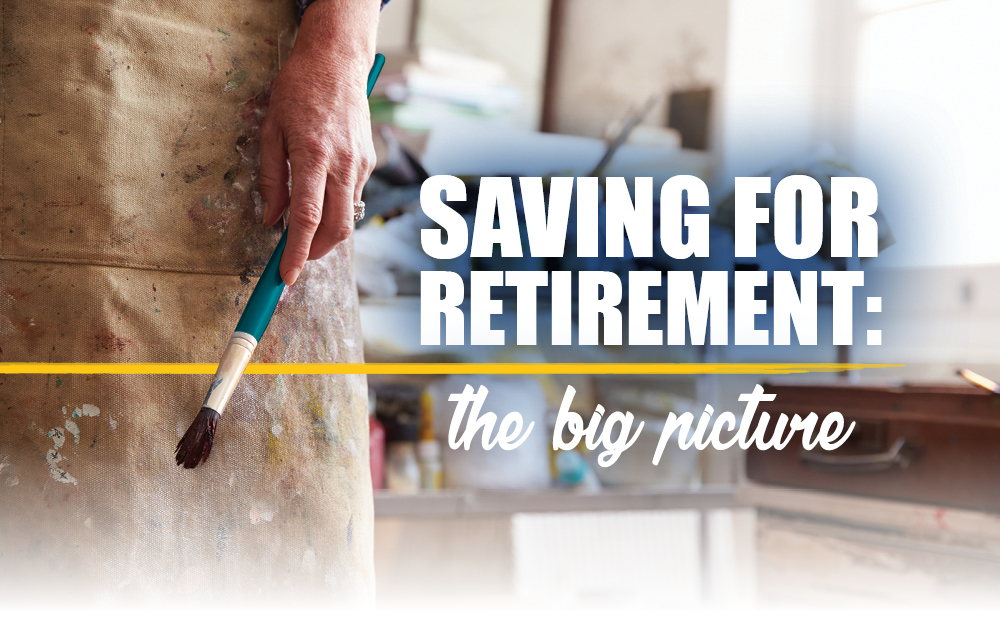
Australians are constantly being told they are not saving enough for their retirement. The argument goes that unless you have enough saved in superannuation you will be forced to rely on the Age Pension. But this is not the whole story.
Super is undoubtedly the most tax-effective vehicle for retirement savings, despite constant government tinkering and rule changes. But for a variety of reasons, most households hold assets both inside and outside super.
Younger people may want to access their savings before retirement to put a deposit on a home, pay for their children’s education or travel overseas.
Investors who are nearer retirement may be hedging their bets by keeping a portion of their retirement savings outside super given ongoing uncertainty surrounding the super rules. By holding assets in different investment structures, such as family trusts or insurance bonds, it reduces the risk of regulatory changes to any one structure.
And from 1 July 2017, under the government’s proposed super reforms, there will be a $1.6 million limit on the amount an individual can transfer from the accumulation phase into the tax-free retirement phase of super. So individuals who anticipate saving more than $1.6 million to fund their retirement will be on the lookout for investments outside super.
The three pillars
Australia’s retirement income system is built on three pillars. There is an income safety net in the form of the Age Pension, compulsory super guarantee payments made by employers on behalf of their employees, and personal savings both inside and outside super. It’s this third pillar that is often overlooked in the national debate about retirement savings.
Australians have $2.1 trillion invested in super.i But they have as much again invested outside super – $2.2 trillion according to a recent Rice Warner report on investor preferences.ii And that’s not including the family home or family businesses.
So who’s investing and what are they investing in?
Saving outside super
According to the Rice Warner report, there are big differences in investment patterns outside super, depending on a person’s age and wealth.
Wealthier investors typically have a higher proportion of their non-super savings in direct shares, direct property and international investment assets. Middle-income investors tend to have more of their savings in term deposits.
It probably comes as no surprise that investment property is the largest asset class overall, at 42 per cent of total assets, followed closely by cash and term deposits. Property investment peaks between the ages of 35 and 55, when people start reducing risk ahead of retirement.
Shares represented just 10 per cent of personal investments outside super, although this increases to 19 per cent for the over 75s. It’s possible that older retirees who are living off the income from their investments prefer the higher liquidity and dividend yields on offer from shares compared with rental property.
Policy implications
The way Australians actually save for retirement is of more than passing interest, it has implications for future government policy. In a recent paper, the Grattan Institute said that savings outside super should be taken into account in policy decisions concerning retirement income.iii Controversially, the authors argued the Super Guarantee should be frozen at 9.5 per cent, rather than progressively lifted to 12 per cent as planned. At present, both sides of politics support the move to 12 per cent.
The reliance of Australian households on investment property held outside super also highlights the sensitivity of the recent debate about winding back negative gearing and capital gains tax concessions. This would be a major blow for younger investors trying to build wealth to provide income in retirement.
The debate about the adequacy and fairness of super is unlikely to go away any time soon. But it’s important to remember that while super is still the most tax-effective retirement savings vehicle, it’s only part of a holistic approach to retirement income. If you would like to discuss your retirement savings strategy, don’t hesitate to give us a call.
i As at 30 June 2016, ASFA, https://www.superannuation.asn.au/resources/superannuation-statistics
ii http://ricewarner.com/investor-preferences-by-age-and-wealth/
Latest News Articles
Back to Latest News
End-of-Year Money Checklist: 10 Things To Do Before NYE

Redundancies in Australia Rising Quietly in White-Collar Sectors


